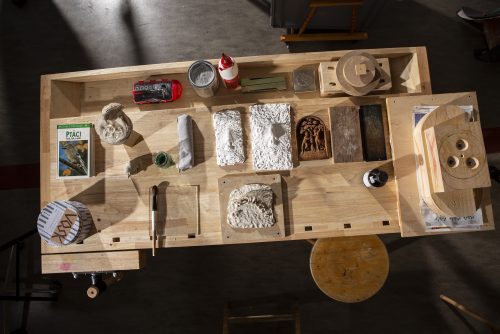
Klara Kristalova, Emelie Sandström, Anna Schachinger
Il Sorriso Degli Dèi

"Il Sorriso Degli Dèi" installation view.
Advertisement
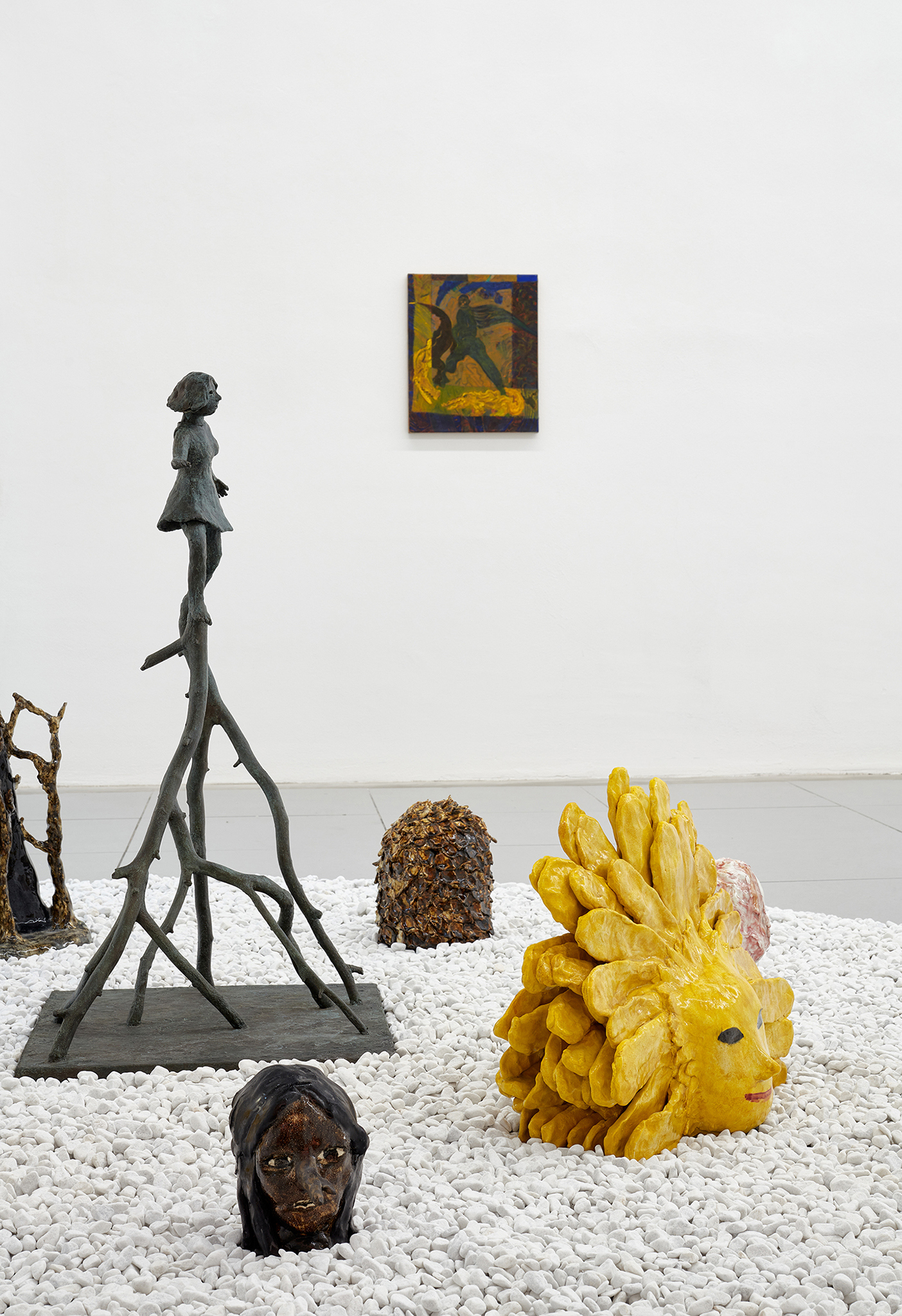
"Il Sorriso Degli Dèi" installation view.

Anna Schachinger, "Saving Whom, From What", 2023 (Oil on sewn together fabric, 46,5 x 38,5 cm).

"Il Sorriso Degli Dèi" installation view.

"Il Sorriso Degli Dèi" installation view.
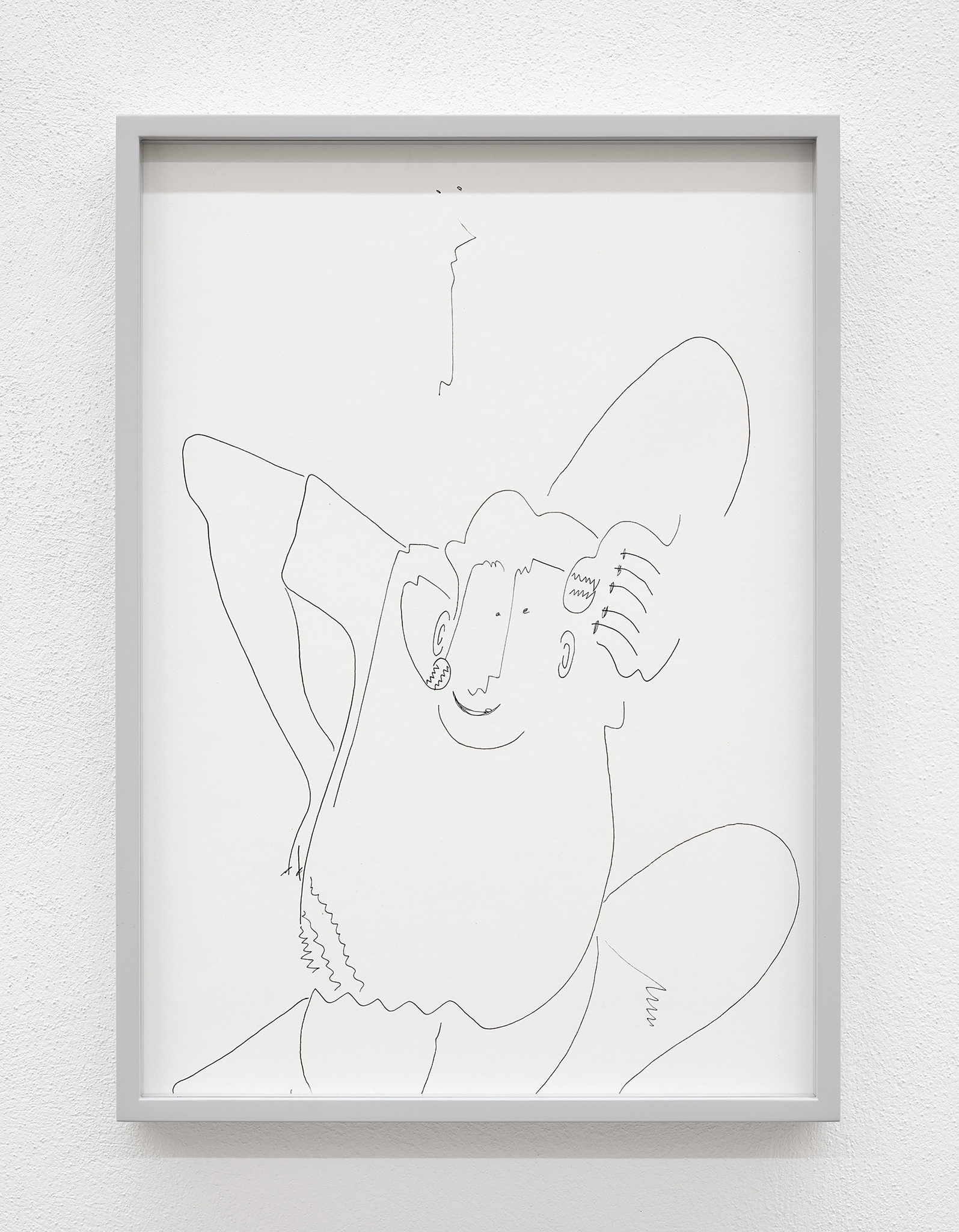
Anna Schachinger, "Nachbarn", 2024 (Micron pen on acid free paper, frame, 43,7 x 31 cm).

Anna Schachinger, "Häuserlbauer", 2024 (Micron pen on acid free paper, frame, 43,7 x 31 cm).
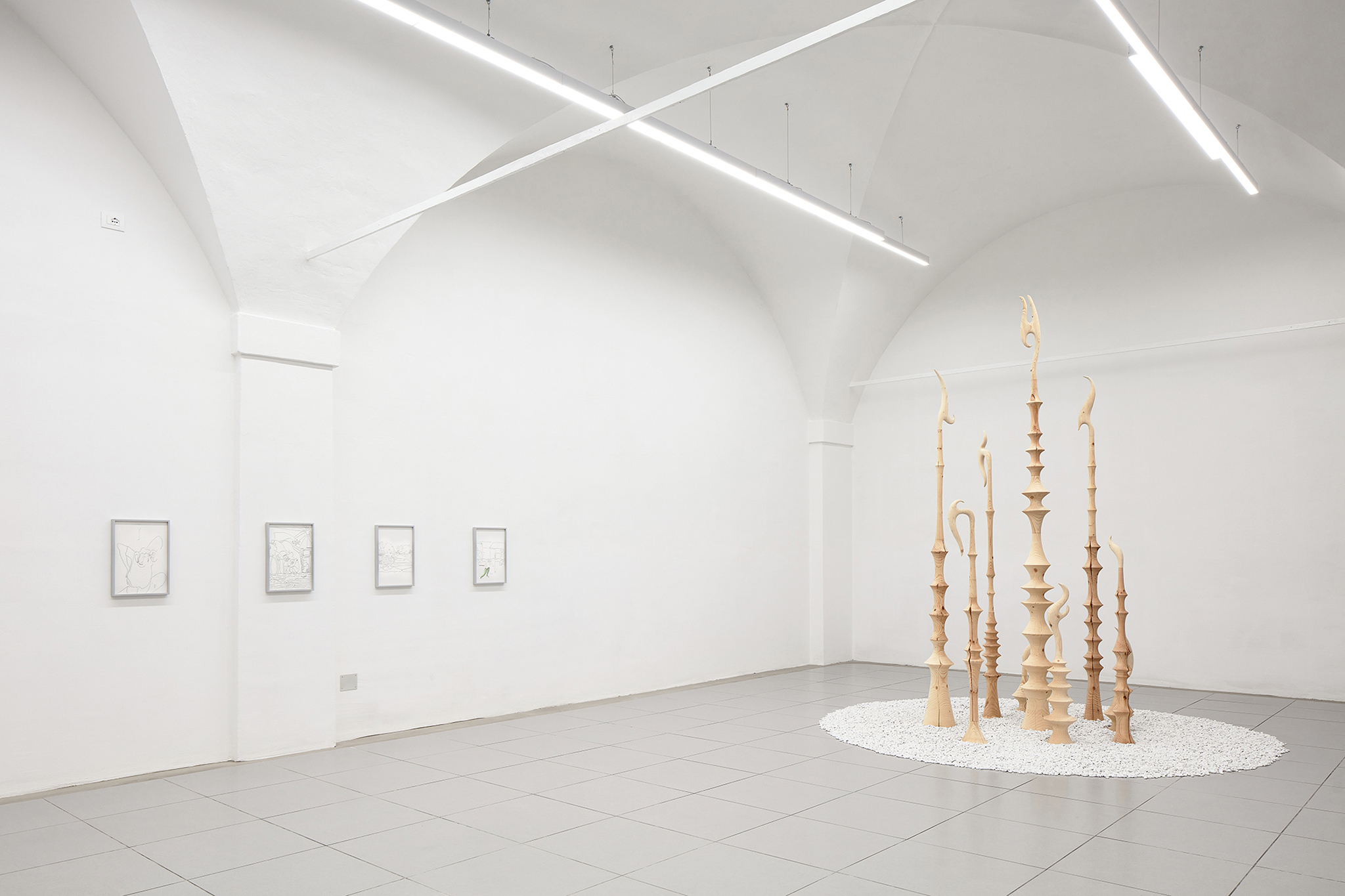
"Il Sorriso Degli Dèi" installation view.
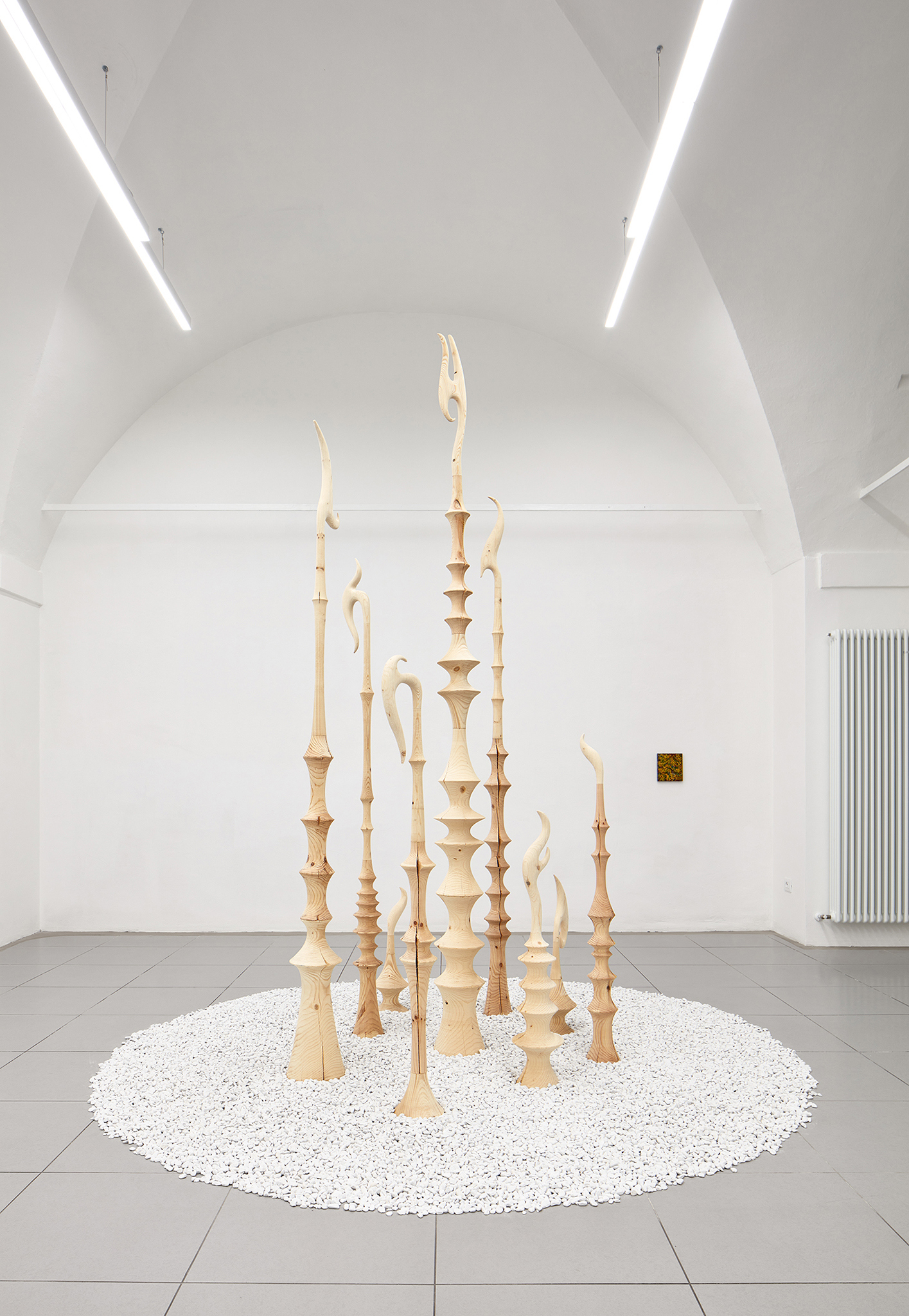
"Il Sorriso Degli Dèi" installation view.
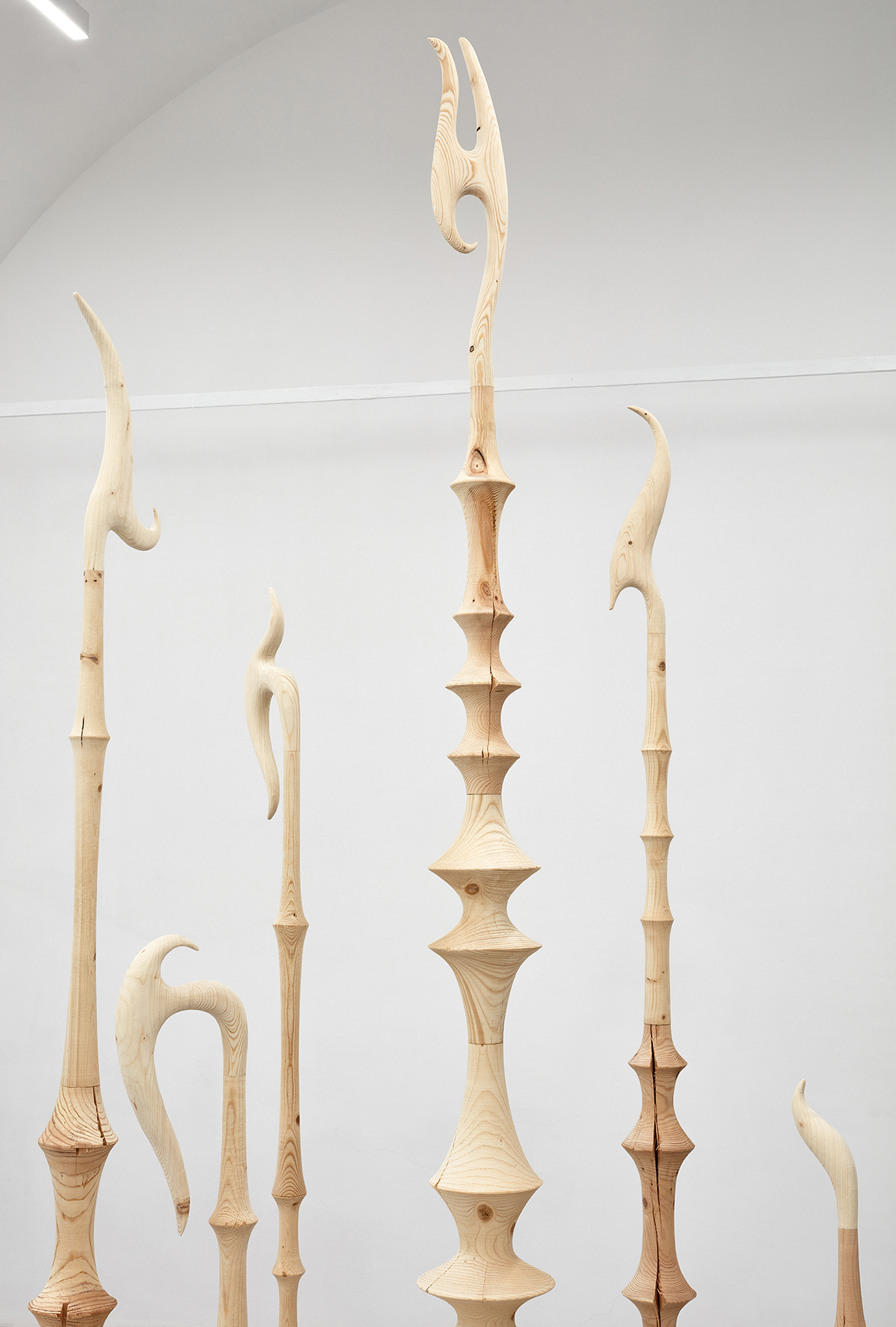
Emelie Sandström, "The Vestibule" (detail), 2024 (Spruce, dimensions variable).

Emelie Sandström, "The Vestibule (Creature IV)", 2024 (Spruce, 137 x 18 x 18 cm).
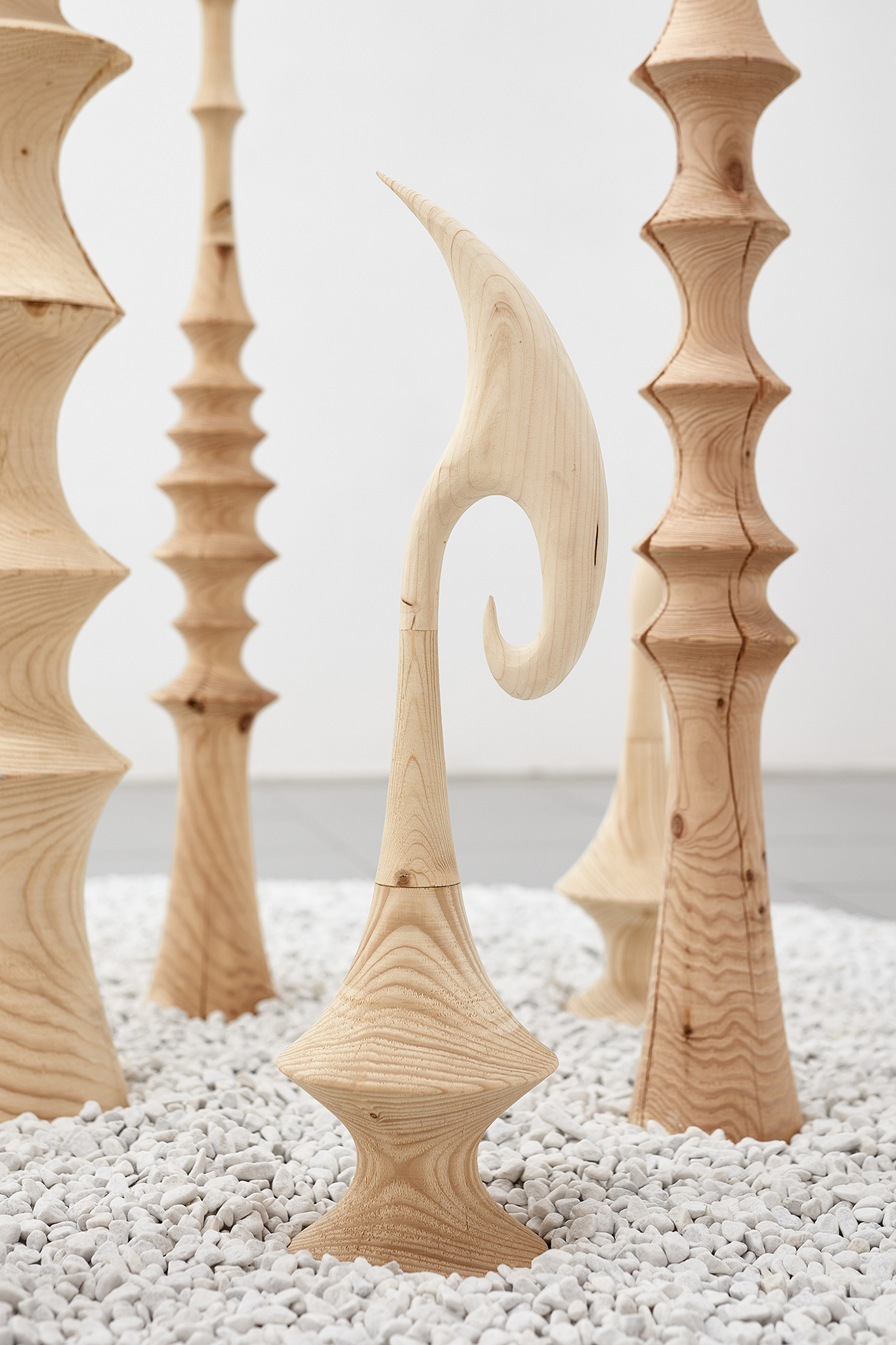
Emelie Sandström, "The Vestibule (Creature II)", 2024 (Spruce, 73 x 18 x 18 cm).
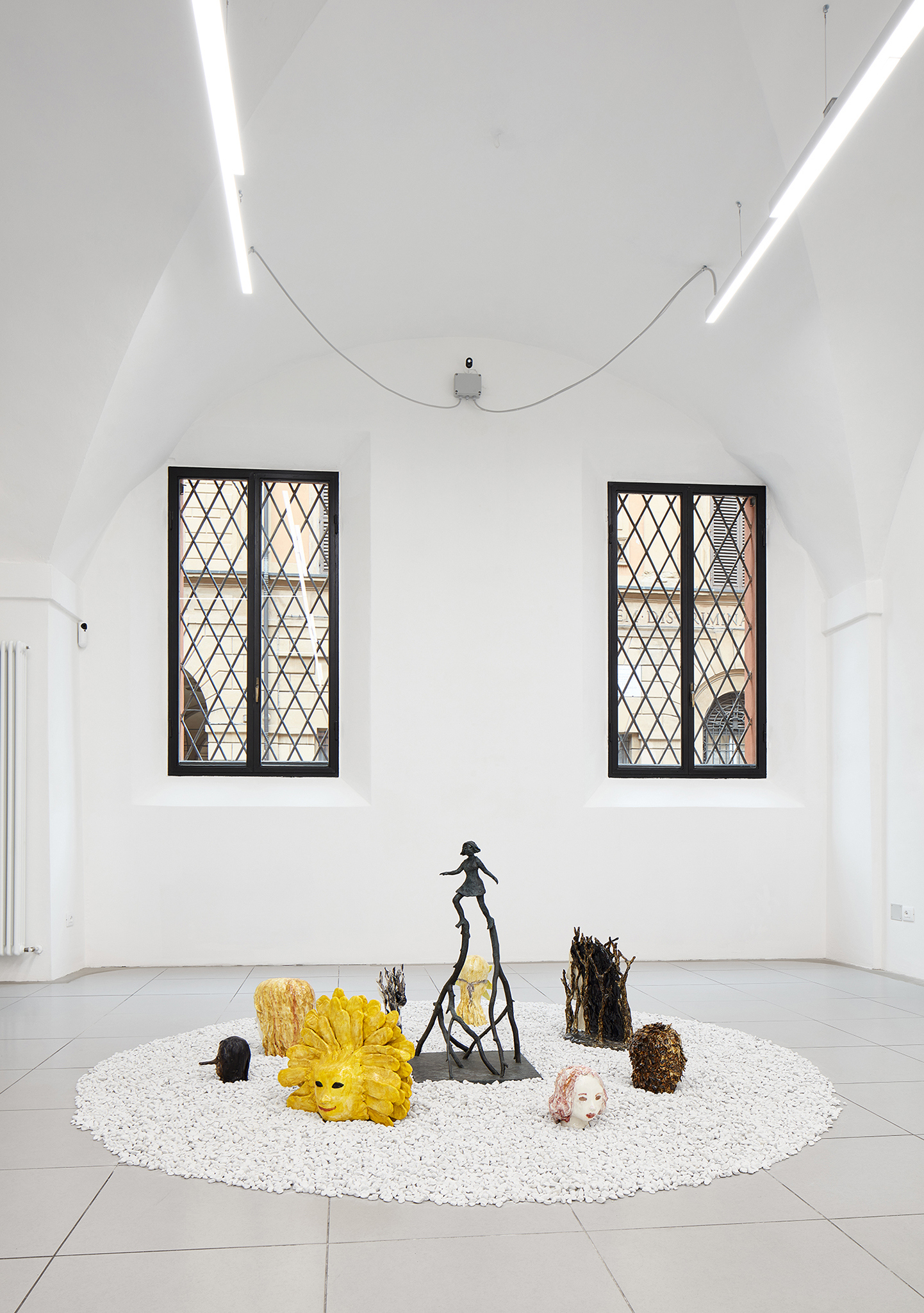
"Il Sorriso Degli Dèi" installation view.
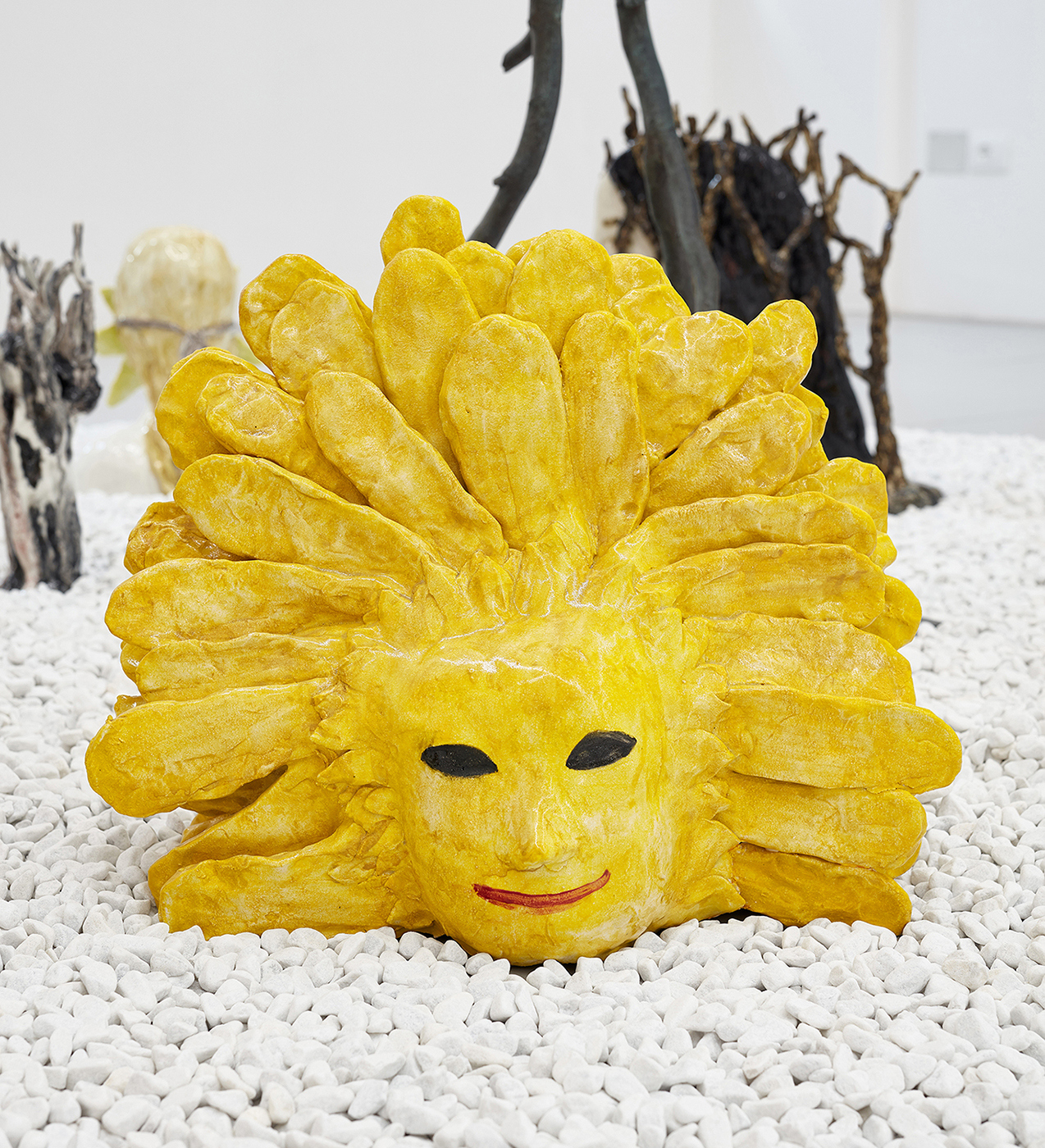
Klara Kristalova, "The Dense Rays of the Sun", 2020 (Glazed stoneware, 42 x 53 x 29 cm).
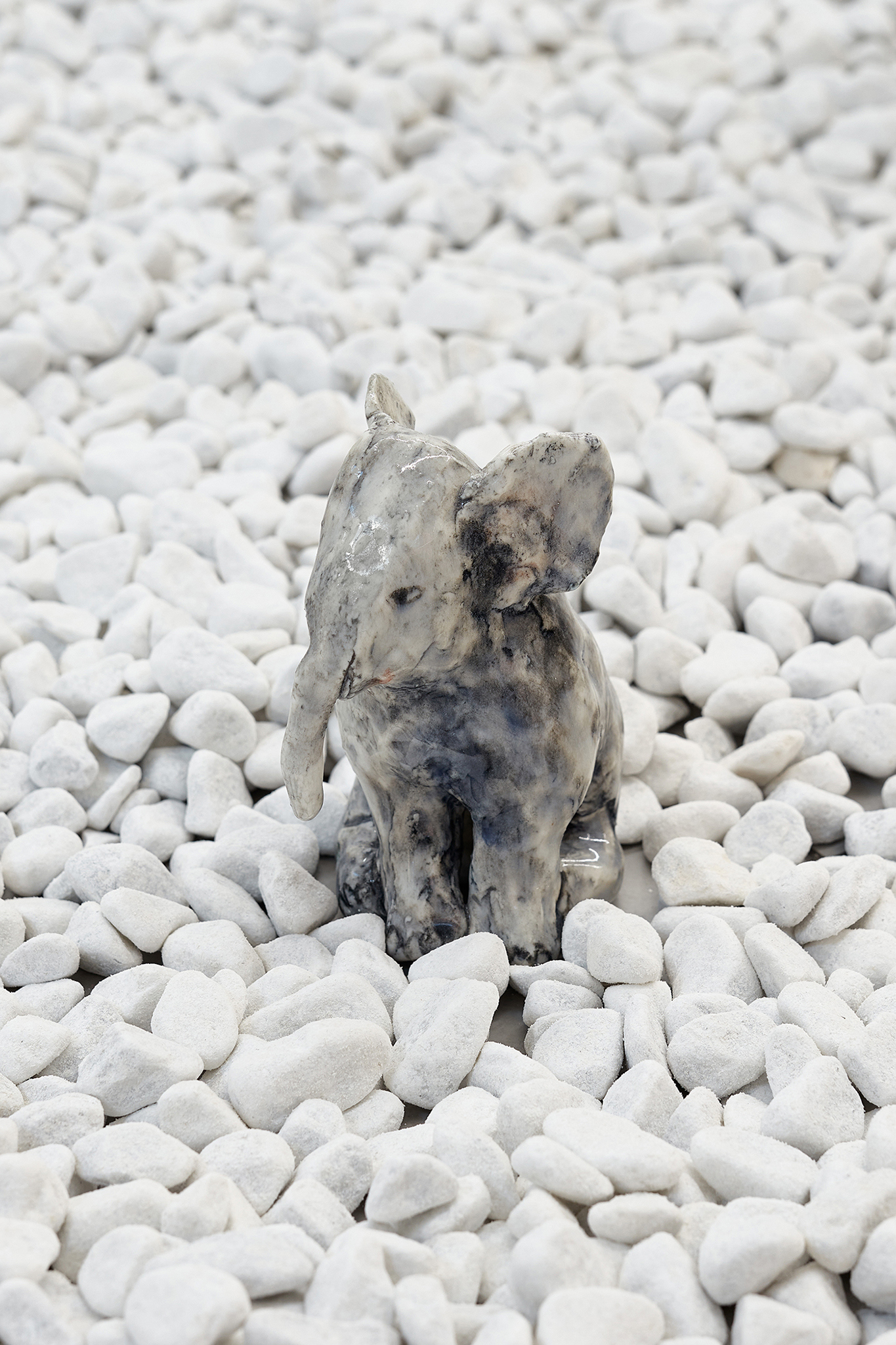
Klara Kristalova, "The Weight", 2020 (Glazed porcelain, 11,5 x 7 x 11 cm).
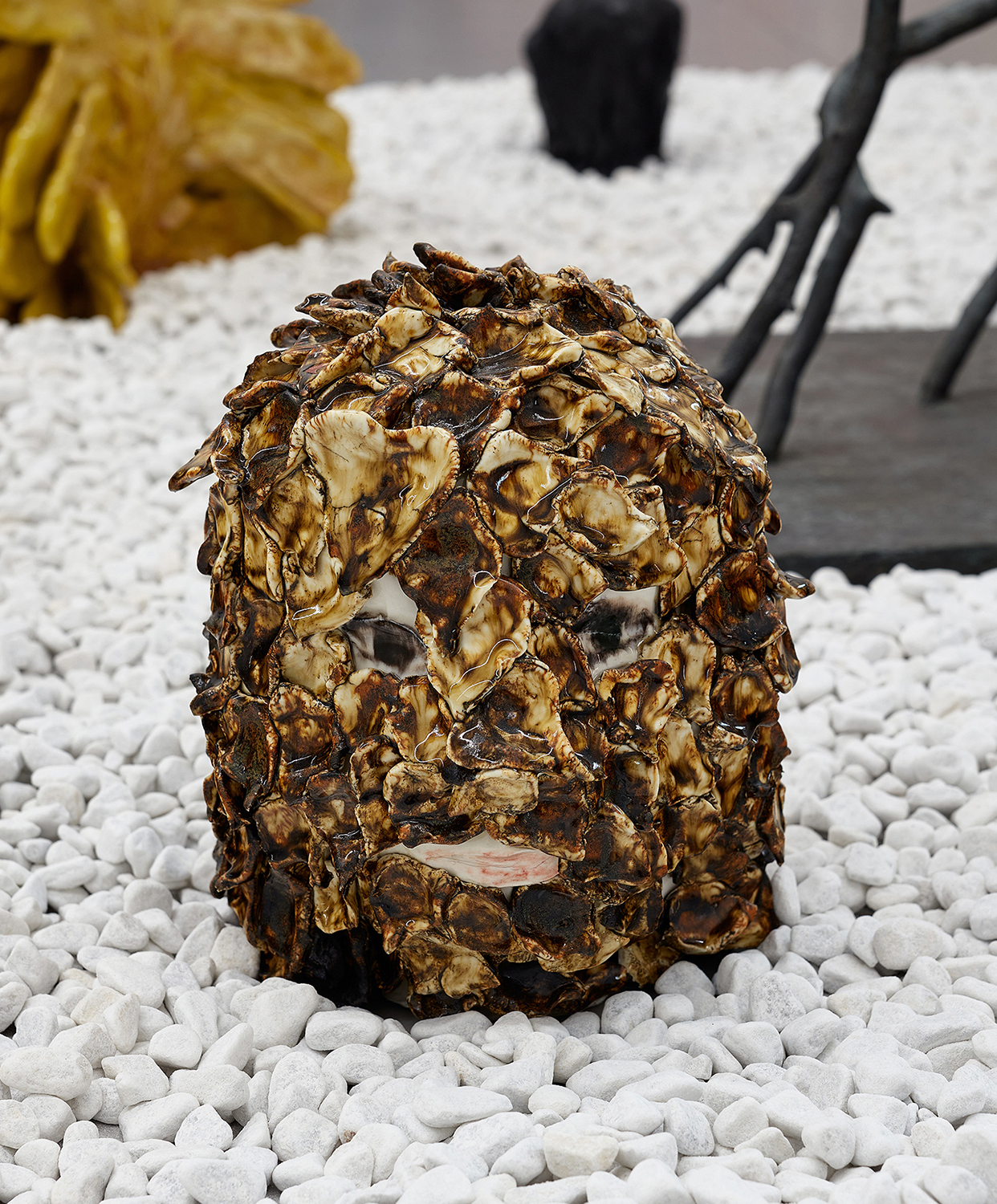
Klara Kristalova, "About Autumn", 2023 (Glazed porcelain, 29 x 23 x 22 cm).
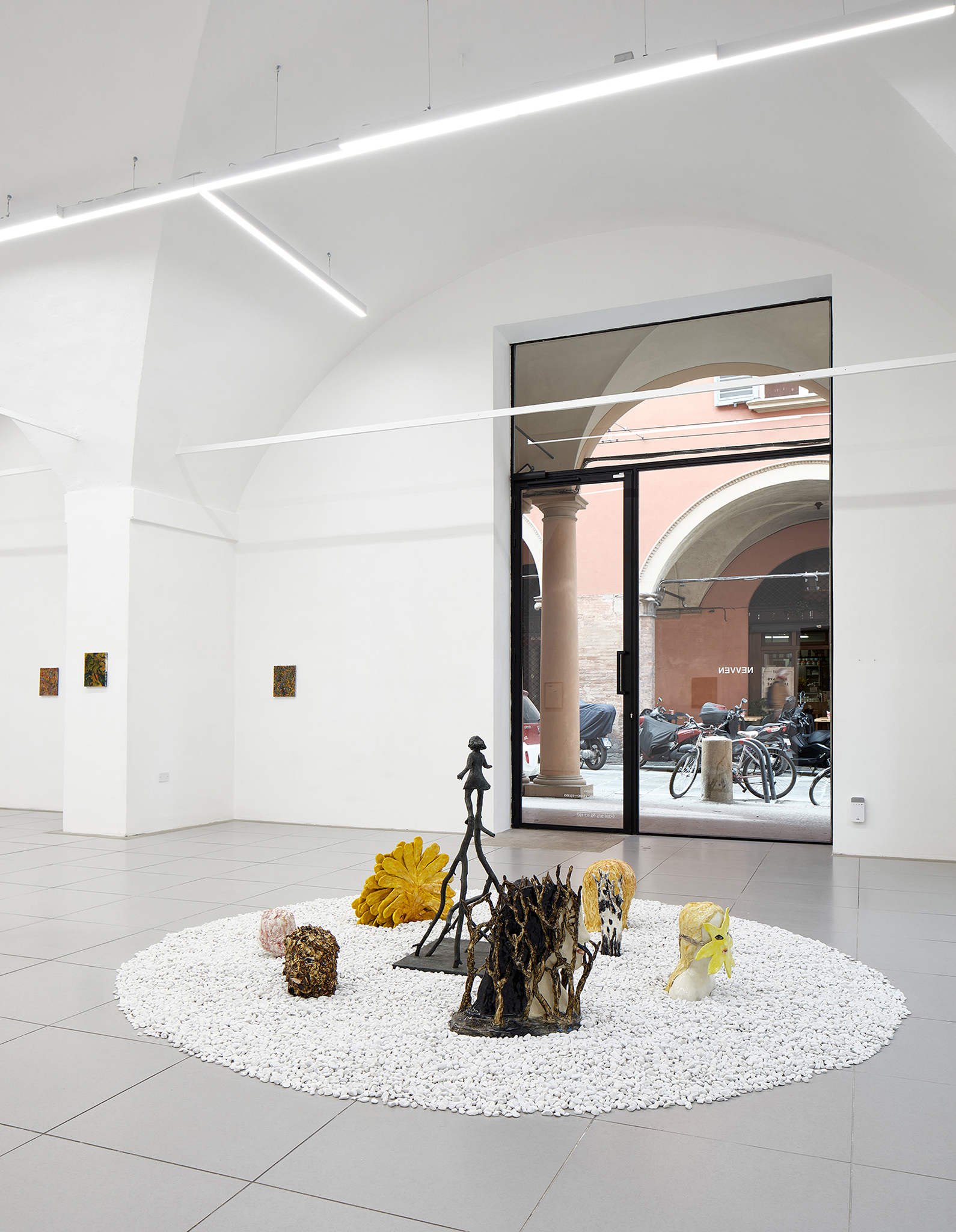
"Il Sorriso Degli Dèi" installation view.

Anna Schachinger, "Sieglinde", 2021 (Oil on cotton, 27 x 22 cm).
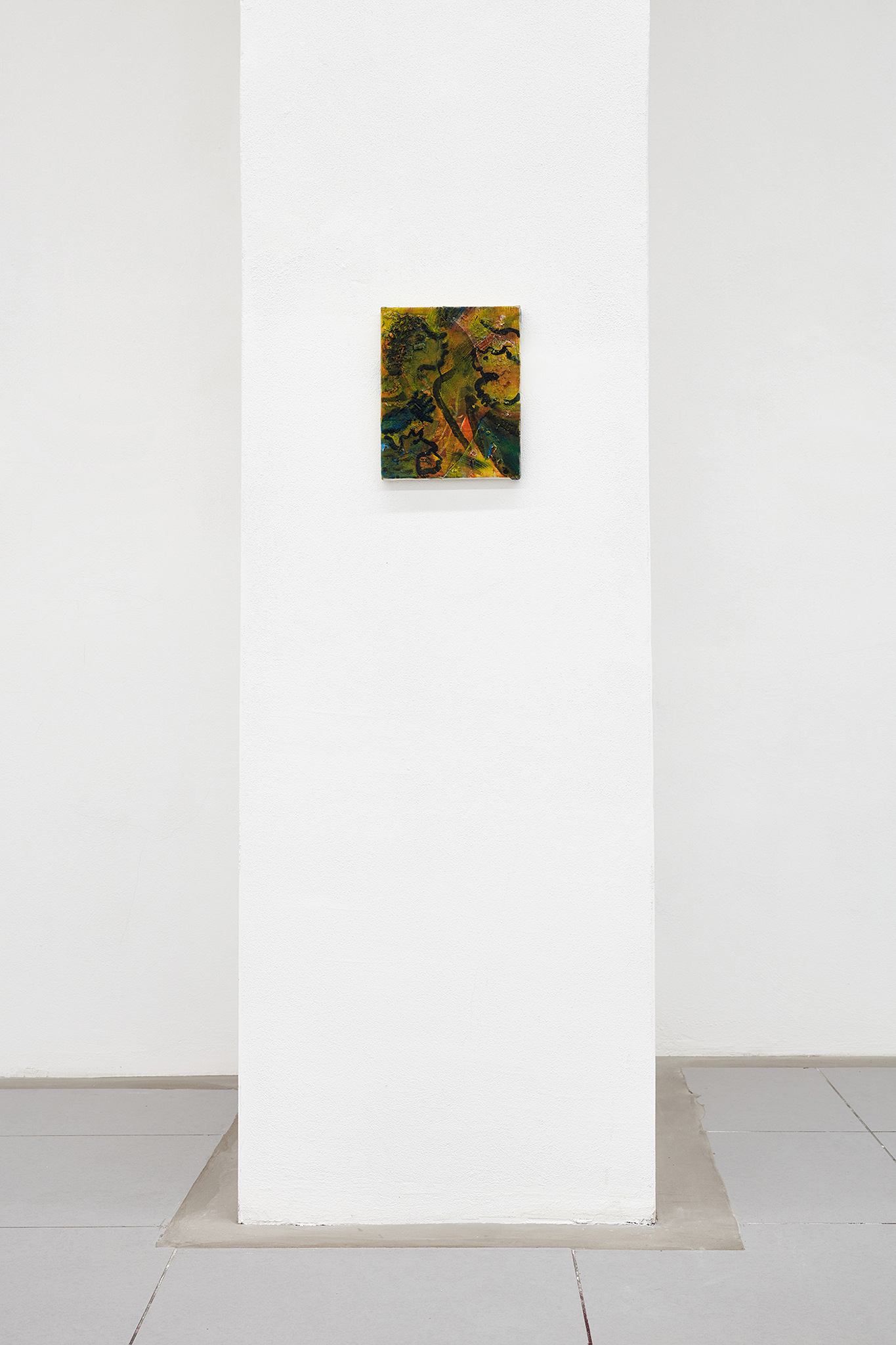
Anna Schachinger, "Klippe", 2023 (Oil and linen on linen, 27,5 x 22,3 cm).
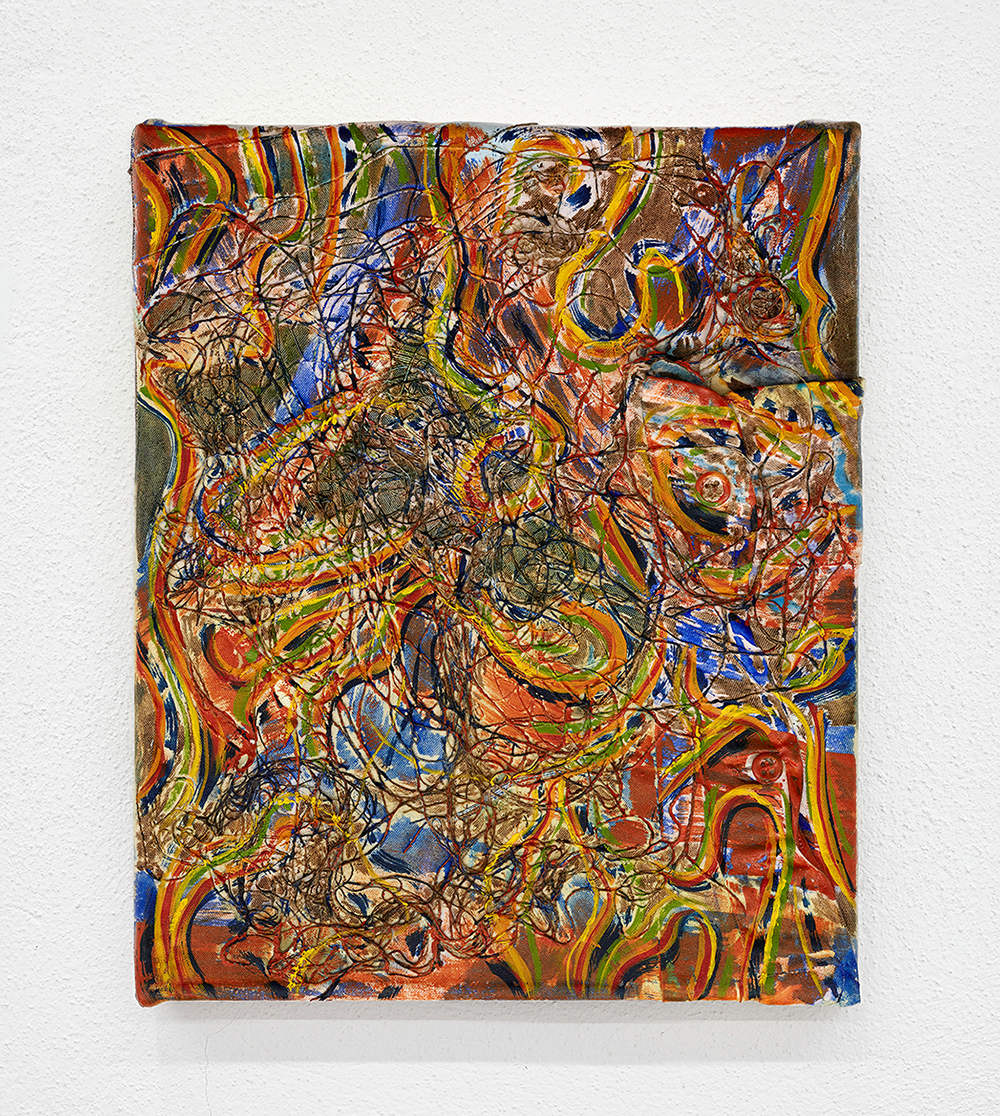
Anna Schachinger, "Hans", 2021 (Oil on linen, 27 x 22 cm).
«I wonder if it’s true that they really saw them.»
«Who knows? But yes, they must have seen them. They only told their names and nothing further – it’s all here the difference between fables and truth “It was that one or the other,” “They did this, they said that.” Who’s sincere, is satisfied with it. They don’t even suspect that somebody else will not believe them. We’re the ones who are false, that never saw these things, but still know every detail of the Centaur’s mane or the colour of the grapes in Icaro’s vines.»(1)
The pale head of a female figure sits on the ground and looks towards us with dark eyes. She is surrounded by branches and we cannot ascertain if we are looking at a metamorphosis, or someone hiding from us in the deep of the woods. In a similar way this circular composition of small and large sculptures by the Swedish artist Klara Kristalova invites the public to a narrative interpretation. The figures for which she has become famous, mostly young girls and animals, most often dealing with the loss of childhood or dark mysterious events, are half fables and Nordic myth, half feminist re-appropriations from a way too exiguous terrain left by ages of objectification of women in art history. Symmetrically, on the other end of the room, we find another circular composition of lathe sculptures by the Swedish Emelie Sandström. Simple and austere, they bring forward one of the most known and long lasting series by the Malmö based artist, a series that she has presented in very different proportions(2) and that she interprets as shapes with magical and protective powers. Sandström’s art transforms a pantheistic, animist and animal-rights credo, into incredible objects. Often in wood, as in this exhibition, but also in metal, glass and resin, her artworks are mystical presences, which for her are deeply and idiosyncratically religious. These two islands of sculptures are conceptually and physically linked with the wall-based artworks by the Austrian artist Anna Schachinger. Caught in the middle between colourful paroxysms and minimalist delicate pen drawings, between abstraction and figuration, the exhibited works exhaustively epitomise the practice from which Schachinger achieved international recognition. Resulting from a cultured research, albeit based on an instinctive use of materials and shapes in a free and expressive process, her artworks find their strength in multiplicity of interpretations and an organic indefiniteness. This queerness that we find in the materiality of her very practice expands physically what she has defined conceptually as a «queer feminist discourse.»(3) They are profound and witty works, similar to much of the mythology from which Cesare Pavese draw inspiration for the book after which this exhibition is entitled, the "Dialoghi con Leucò". There is where we have found the common ground of these three very different art practices: in a mixture of irony and fable, myth and humanism through a feminist perspective. As in many of the dialogues by Pavese, and the pan-European mythology, the protagonists are women, and, as Medea, Helen and Calypso did at the time of our ancient ancestors, Kristalova, Sandström and Schachinger’s art brings us far from reality and at the same time closer to our own self, in a magical world filled of powerful symbols, where we would like to reimagine a more feminine world. Could it be the near future? A sun with a human face smiles and gazes at us. It reminds of another passage from Pavese’s book, where Circe, herself an enchantress, as maybe, in their own ways, also the three artists on show, ponders on her experience with Ulysses and tells to Leucothea (the eponymous "Leucò"): «[…] He never knew what the smile of the gods was – of us that know destiny.»(4)
—
*"The Smile of the Gods"
(1) C. Pavese, "Dialoghi con Leucò", Giulio Einaudi Editore (1953), p. 207. (Our translation)
(2) Which she presented in bronze for monumental public commissions in Malmö, Stockholm and Jonköping, as much as in large installations including dozens of single pieces in wood.
(3) Sabeth Buchmann in conversation with Anna Schachinger, Galerie Sophie Tappeiner (2022), p. 3 (https://www.sophietappeiner.com/wp-content/uploads/2022/05/Exhibition-Text-Anna-Schachinger-Aneinander-E-1.pdf accessed on 16.03.2024).
(4) "Dialoghi con Leucò", p. 147. (Our translation)
Mattia Lullini




